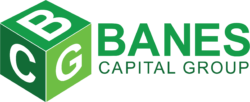Exit Pandemic –
Enter Pandemonium
Much of the downside of the pandemic has been reversed – though it’s still hard to understand news and interviews through masks. If you’re still writing the Year of the Ox on your checks, the Chinese Year of the Tiger began in February. With the Olympics still going on in Beijing, we’ll cover the Yang and Yin of recent news. Yes, it’s backwards for ups and downs. The 2 sides represent opposing and yet complementary interconnected forces, known as chi. I like the Japanese proverb that goes deeper. It states: “The reverse side also has a reverse side.” Though there was only an A and B side of the Door’s ‘Break on through to the other side’, it would make sense if one was in Yin – as Yang is the ‘sunny side.’ In the past few weeks, there’s been pandemonium on both sides.
Quick Links
The chief source of the pandemonium in the markets has been the ‘reverse side’ from FRB St. Louis President James Bullard. The formerly more dovish and usually more moderate Bullard went all in – suggesting the Fed needed to double down on hikes in order to corral inflation and regain credibility. The Fed spent such a long time in ‘inflation denial’ that they’ve got a lot of ground to reverse. The thought of an initial 50–bps March hike sent 10–year yields above 2% for the first time since August 2019. Bullard doubled down again suggesting the Fed needed to hike rates 100 bps by July. While focused on the March meeting, Bullard said the FOMC needed to be nimble and even consider inter–meeting actions. Responding to the fastest inflation in 4 decades, he said the Fed may need to get their funds rate above 2% (doubling again). The talk of rates moving 50, 100, or even 200 bps sent the markets into jitter mode.
Speaking to the Fed being “behind the curve” and needing to “restore credibility”, former Treasury Secretary Lawrence Summers said they needed to raise rates at each of the remaining seven FOMC meetings this year –with possible meetings subject to a larger hike than 25 bps. Seeking damage control, the Fed released a bond–buying schedule through March 11th. With Fed Chair Jerome Powell on record as saying hikes wouldn’t commence until the tapering of bond purchases was through, the markets calmed a bit. The Fed’s January minutes released on Wednesday showed more rate hikes as possible. They said most officials thought “if inflation does not move down as they expect, it would be appropriate for the Committee to remove policy accommodation at a faster pace than they currently anticipate.” They said inflation had broadened over the second half of 2021 and its risks were skewed to the upside. For those of us that remember the forecast of no hikes until 2024, this conjures the old undaunted and unchecked Fed campaigns that gave us up to 17 consecutive hikes. The last one – right into the financial crisis.
On the Yang side, though stocks were off to their worst beginning in over a decade, they staged their best 2–day rally since 2020 on the last 2 days of January – gaining 4.37%. They continued with the best 3–day rally since 2020 of over 5.08% and then 4 days for over 6.07% through the first trading sessions of February. January payrolls beat all expectations with 467,000 jobs added – and over 700,000 jobs were added in the 2–month revision (311K December). The U.S. showed its first monthly budget surplus in January since September 2019 and January Retail
Sales surged!
On the Yin side, on Thursday the Dow fell the most since November – losing 622 points. Consumer confidence cratered to 11–year lows, we had another record trade deficit, the U.S. deficit topped $30 trillion, and inflation measures were hitting 40–year highs. Gas prices hit the highest national levels since 2013 and typical households were said to be spending $276 more a month for essentials compared to a year ago. Rising rates and inflation were making home and auto purchases tougher – and sometimes prohibitive. Rate hike expectations went from 3 or 4 to 7. Will they – or won’t they? Global markets are also on edge as to whether or not Russia will invade Ukraine.
Looking Ahead
- Equity cycles are sideways to better – and suggest a high near March 7th.
- Bond yield cycles suggest selling rallies for yields expected mostly higher into March 4th.
- All U.S. Markets are scheduled to be closed on Monday (2/21/22) for the President’s Day holiday.
Treasuries, Agencies, and MBS
It’s no surprise that yields have been on an upward trek. The cycles, the Fed, and inflation are all headwinds for price appreciation. Into February 4th, yields rose by 15, 15.5, 14, and 13.5 bps for the 2, 5, 10, and 30–year Treasury curve. Last week, those sectors saw yields higher by 19, 8.5, 3, and 3 – with the 2–year capitulating to possible quick and imminent hikes. Through Thursday, the curve twisted higher with 2 and 5–year yields down by 3.5 and 1.5 but 10 and 30–year rates claiming another 2 and 5.5 bps. Freddie Mac 30–year mortgage rates have now risen 70 bps in 2022 to 3.92%. 15–year rates are up from 2.43% to 3.15% over that period and above where 30–year rates were in December. That’s no surprise as 2–year rates rose to the highest since December 2019, 5–year rates to May 2019 levels, the 10–year over 2% to July 2019 levels, and 30–year yields back to May 2021 levels.
The U.S. Treasury had a monthly budget surplus of $118.699 billion in January – the first since September 2019. 4 months in at almost $259 billion, we are standing nearly 65% less than fiscal 2021. Foreign holdings of government debt rose to a record of $7.74 trillion in December. Long–term flows increased by $114.5 billion. However, there was an outflow for all assets as they fell by $52.4 billion. The Atlanta Fed’s GDP–Now forecast for Q1 2022 started out at only .1%. It fell back from a high of 1.5% on Wednesday to 1.3% Thursday.
Consumer Credit expanded by $18.898 billion. A surge in imports led to the largest trade deficit on record as imports rose 20.5% and exports rose only 18.5% in 2021. The annual deficit with China was up $45 billion to $355.3 billion. Overall, the December deficit of $80.7 billion led to an annual shortfall of $559.1 billion.
The Treasury sold $50 billion 3–year notes at 1.592% – the highest yield since December 2019. Demand was off a little to last month though the buying group that includes foreign central banks increased their allocation from 61.6% in January to a record 68.5%. The 10–year auction brought 1.904% for $37 billion in supply. Demand was the highest since May 2020. Foreign buying rose from 65.5% to a record 77.6% this month – leaving the dealer allotment at a record low 7.4%. The 30–year bond auction brought 2.34% for $23 billion. Demand fell versus January and foreign buying increased by 3% to 68%. $19 billion in 20–year bonds came at 2.396% this week. That was a record high since the reintroduction of the 20–year offerings. Demand was off a little versus January and foreign buying fell from 66.2% then to 62.9% this month. After the President’s Day holiday on Monday, the Treasury will auction $52 billion 2–year notes on Tuesday (02/22), $53 billion 5–year notes on Wednesday (02/23), and $50 billion 7–year notes on Thursday (02/24).
Economics
January payrolls seemed very much in jeopardy as ADP Employment Change showed 301K losses versus an expected 180K gain! They couldn’t have been a worse predictor as Nonfarm Payrolls for January came in at 467K versus only 125K expected. Not only that, but 709K jobs were added in the 2–month revision. Private Payrolls increased by 444K versus 35K expected, so the big question was – how could the ADP result be so far off? Manufacturing added 13K jobs and the U.S. Unemployment Rate rose from 3.90% to 4.00%. The Labor Force Participation Rate increased from 61.90% to 62.2% and the Underemployment Rate fell from 7.30% to 7.10%. Average Hourly Earnings were up by .70% – accelerating the annual pace from 4.90% to 5.70%! Average Weekly Hours fell from 34.7 to 34.5. Challenger Job Cuts fell by 76% versus last year (less firings). JOLTS Job Openings rose from 10.775 million to 10.925 million – still plenty of jobs to be had. Initial Jobless Claims had been below 200K in December. The past 2 weeks they were 225K and 248K. Continuing Claims had fallen to 1.551 million by year end. The past 2 weeks were 1.619 million and 1.593 million. The service sector outlook fell from 62.3 to 59.9.
ISM Manufacturing dropped from 58.8 to 57.6. Prices Paid rose from 68.2 to 76.1. New Orders dropped from 61 to 57.9. Employment improved from 53.9 to 54.5. The Leading Index fell .30% versus an expected rise of .20%. While Empire Manufacturing (New York) rose from –.7 to 3.1, the Philadelphia Fed Business Outlook fell from 23.2 to 16. NFIB Small Business Optimism fell from 98.9 to 97.1.
Retail Sales jumped by 3.80% in January after being revised .60% lower to a 2.50% drop in December. Ex autos, sale rose by 3.30%. In January, Industrial Production rose 1.40%. Capacity Utilization jumped from 76.60% to 77.60%. Nonfarm Productivity for Q4 2021rose by 6.60%. Unit Labor Costs were .30% higher. Factory Orders fell .40% in December. Ex transportation, they rose .10%. Orders for Durable Goods fell by .70% but were .60% higher ex transportation. Orders for Capital Goods rose .30%. Total Vehicle Sales improved in January – rising from 12.44 million to a 15.04 million annual pace.
Consumer Prices increased by .60% in January – accelerating the annual pace from 7.00% to 7.50%. The core (Ex Food & Energy) rose .60% as well. Annual core CPI rose from 5.50% to a 6.0% pace. Real Average Hourly Earnings (considering inflation) fell by 1.70% annually. Real Average Weekly Earnings dropped from –2.0% to –3.10% – not at all keeping pace with inflation. Producer Prices rose by 1.00%. Annual PPI slipped from 9.80% to a still–lofty 9.70%. Core PPI rose .80% – with the annual core pace lessening from 8.50% to 8.30%. Import Prices rose by 2.00% and Export Prices rose 2.90%.
The homebuilder outlook fell from 83 to 82 – the lowest since October (NAHB Housing Market Index). January Housing Starts fell 4.10% to 1.638 million annual units. Building Permits rose .74% to 1.899 million annual units. Construction Spending was up .20% in December. Sales of Existing Homes rose 6.73% to 6.5 million annual units. Analysts were questioning the data.
On Monday (02/21), U.S. markets will be closed for President’s Day (stocks for Washington’s birthday). Tuesday follows with home prices, Conference Board Consumer Confidence, and Richmond Fed Manufacturing. Wednesday brings MBA Mortgage Applications (which fell 8.40% and then 5.40% over the past 2 weeks). Thursday reveals jobless claims, the Chicago Fed National Activity Index, January New Home Sales, a Q4 2021 GDP update, and Kansas City Manufacturing Activity. Friday is set for Personal Income & Spending for January, the PCE Deflator, Pending Home Sales for January, Durable Goods Orders, and the University of Michigan sentiment surveys. The following Monday (02/28) closes out February trading with the merchandise trade deficit, MNI Chicago PMI (purchasing managers), and Dallas Fed Manufacturing Activity.
Equities
Prices this week are as of Thursday. By this afternoon, stocks were lower by about .7%. The Dow Industrials rose 1.05% into February 4th but fell a similar amount last week – losing 351.68 points or 1.00% to 34,738.06. The Dow is 1.23% lower this week after having its worst day of the year. The S&P rose 1.55% and then fell 1.82% last week. It’s .87% lower this week. The Nasdaq gained 2.38% and then lost 2.18%. It’s .54% lower this week. The Dow Transports gained 1.10% and then lost 1.41%. They are off a slight .01% this week. Bank stocks gained 4.19% and 1.01% but are 2.60% lower this week.
Other Markets
Crude Oil rose 6.32% and .86% – rising above $95/barrel for the first time since August 2014. Crude is 1.44% lower this week (as of Thursday). Commodities rose 3.34% and .68%. They are .23% higher this week. Gold gained 1.22% and 1.89%. Gold rose above $1,900/oz. this week for the first time since last June with a 3.25% gain. The U.S. Dollar dropped 1.84% and then rose .62%. It’s .28% lower this week. The Japanese Yen was unchanged and then .14% lower. It’s .42% higher this week. The Euro surged 2.67% and then fell .86% last week. It’s .10% higher this week. Corn lost 2.44% and then rose 4.92%. It’s .15% lower this week. Cotton gained 2.41% and then lost 1.15%. It’s 2.67% lower this week.
“All human beings should try to learn before they die what they are running from, and to, and why.” James Thurber
“If you haven’t found something strange during the day, it hasn’t been much of a day.” John A. Wheeler
Doug Ingram, Financial Economist
Additional Information is Available on Request
Banes Capital Group, LLC (BCG) has been granted permission by the author, Doug Ingram and Strategic Technical Initiatives, to distribute this market commentary (MC). All views, opinions and estimates included are his as of this date – and are subject to change without notice. Mr. Ingram’s views, opinions, and estimates are not necessarily those of BCG and there is no implied endorsement by BCG of any of the information contained within this MC (which may in fact directly conflict with those being published and distributed by BCG, whether or not contemporaneous). In the event of such conflict, BCG is not under any obligation to identify to you any such conflicts. This MC is for informational purposes only and does not constitute a solicitation or offer to buy or sell any securities, futures, options, foreign exchange or any other financial instrument(s) and/or to provide any investment advice and/or service. Although the information presented has been obtained from sources believed to be reliable, we cannot guarantee or assume any responsibility for the accuracy or completeness of the information shown herein.







